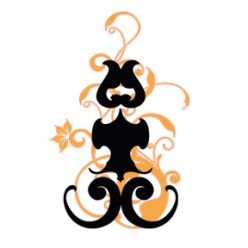Some fun new research has discovered that turning your gym into an oversized, self-propelled boom box can boost your workout performance:
…the results showed that most of the volunteers had generated significantly greater muscular force while working at the musically equipped machines than the unmodified ones. They also had used less oxygen to generate that force and reported that their exertions had felt less strenuous. Their movements were also more smooth in general, resulting in a steadier flow of music.

Abstract Design
Earlier research has already demonstrated that music both inspires workouts and calms the nervous system, improving overall performance. Along with endorphins, it’s a natural pain reliever (as I can attest, having shredded my posterior tibial tendon by running with the assistance of Coldplay.)
But still, most of us treat things like music as incidental–nice to have, when we think about it, but not necessary or integral to our lives.
Music, however, can be a gateway to the state of consciousness known as ‘flow’; when we are so engaged in an activity that our sense of time and identity seems suspended. As Mihaly Csikszentmihalyi describes, in ‘Flow: The Secret to Happiness,’ our brains can only process about 110 bits of information per second. When our brains are immersed in a creative activity, there is not enough bandwidth left over for maintaining a sense of individual identity, and all that goes with it–hunger, fatigue, worry, and pain.
I don’t know how many of you experience this, but during my 20+ years as an artist, I routinely use music as a way to jump-start a state of flow. It’s like hopping on a train. The music seems to obviate doubt and paralysis by providing a clear pattern for moving and thinking. My brain is both attending and translating the sounds into a series of creative decisions which leave no room for extraneous sensations. It’s only when the album ends that I notice I’m hungry and have to pee.
How does this happen for you? Do you ever drop your body while you’re working? What about during a massage?

